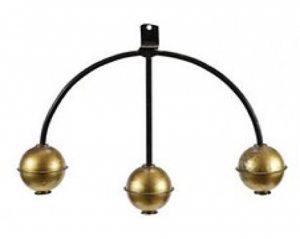Who the Heck is Saint Nick?
In 828, during the rush to rescue the remains of antique Christian heroes from the iconoclastic clutches of new Muslim rulers, Venice captured most of Saint Mark. Some leftovers remained in Alexandria, most notably his head.
[1]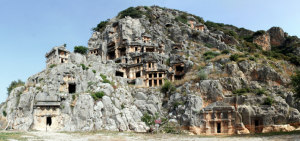
Venice had similar designs on Saint Nicholas, the erstwhile Graeco-Roman Nikolaos, Bishop of Myra. His tomb had been a much valued and highly profitable pilgrimage destination, but this area of Lycia, now in modern Turkey, had fallen to the Sunni Muslim Seljuks. In 1087, there appears to have been an unseemly race with the sailors of Bari. Team Bari won, scooping up all but a few fragments of the good Bishop, sailing triumphantly back home – a mere thousand miles. Here the majority of Saint Nicholas continues to deliver his timeless gift of wealth.
[2] 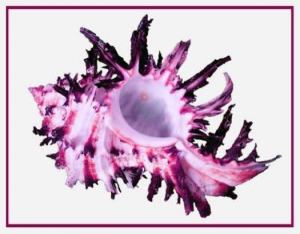
For Nikolaos of Myra was indeed wealthy. Myra (now Demre) drew massive profits from the manufacture of the dye Imperial Purple. Pliny the Elder describes the process in detail starting with the secretions of a prolific predatory rock snail of the species Murex. Many shells were crushed, the poison glands extracted and boiled, and the resultant liquid reduced to produce a minute quantity of the intense dye. 12,000 snails “yield no more than 1.4g of purple dye, enough to colour only the trim of a single garment”. This prized statement of ancient power and influence, the colour of “blackish clotted blood”, deepened in sunlight and stank most foul. On the open market it was worth its weight in gold.
Orphaned at an early age, the Greek Nikolaos inherited the family fortune. He was soon converted by peripatetic monks to the fashionable ideology of the early Christians, preferring to distribute his wealth in gold coin to benefit needy children. He famously and discreetly donated three bags of gold to a poor widower with three daughters who, being without dowries, were destined to be sold into prostitution. Nikolaos is now the patron saint of pawnbrokers – via the bankers of Lombardy and the Medici family of Florence.
Nikolaos died on December 6th 343 at the age of 73, an enormous age for the time. He was canonised by general consent at a time before the Pope claimed this right for himself. The ripple of reverence for his secretive generosity to poor children eventually lapped across the Mediterranean into Northern Europe.
Here we need to remember that Bishop Nikolaos of Myra was a powerful and vociferous figure during the establishment of the orthodox Christian church. At the bidding of Emperor Constantine, he was present at the fractious First Council of Nicaea – a signatory of the Nicene Creed in 325: “We believe in one God, the Father Almighty, Maker of all things visible and invisible…”
The Feast of Saint Nicholas was celebrated on the day of his death December 6th, on the eve of which gifts were secretly given to children who put out a shoe to receive them.
In 332, Emperor Constantine declared that December 25th was to be recognised as Jesus Christ’s birthday. A little later, Pope Julius I confirmed the celebration – a manoeuvre to placate irritable pagans.
Pagan populations had long recognised that the Winter Solstice, the coming of Spring, occurred around this date. The solstice was known in Northern Europe and Scandinavia as Yule, and in the Roman Empire as the licentious festival of Saturnalia. December 25th was the birth day of the popular cult sun-god Mithra. Primeval Indo-Persian Aryan Mithraism was the main rival to early Christianity – they had many beliefs in common.
In Northern Europe, December 6th and December 25th were elided into Cristes-messe (1131). This new festival was closely associated with Viking Yule which was celebrated with decorated evergreen trees, sacrifice and eating of wild boar for the favour of the fertility god Frey, and burning logs and hanging wreaths and mistletoe for the god of light and goodness Balder. Above all, the Scandinavian “Old Man Winter” would be dressed up in a hooded fur coat, and welcomed into homes to join the party, travelling on a white horse. This original model for “Father Christmas” was, of course, the long bearded Odin on his horse Sleipnir, whilst his co-god, the Thundergod Thor, was pulled around the heavens on a wagon drawn by goats.
In Holland, Saint Nicholas translates into Sinterklaas. The first Dutch emigrants of the 17th century took Sinterklaas with them to America where he became embedded in the culture of New Amsterdam – forcibly renamed “New York” by the British in 1674.
In 1823, the developer of Manhattan’s Chelsea, the billionaire Professor of Biblical Learning, Clement Clarke Moore, published his poem “A Visit from St. Nicholas”. Almost single handedly Moore had managed to re-mix the magical archaic myths to create a cosily domesticated take on Christmas and Santa Claus – 20 years before Charles Dickens dreamt up “Christmas Carol”.
‘Twas the night before Christmas, when all through the house
Not a creature was stirring not even a mouse
The stockings were hung by the chimney with care
In hope that St. Nicholas soon would be there…
[4]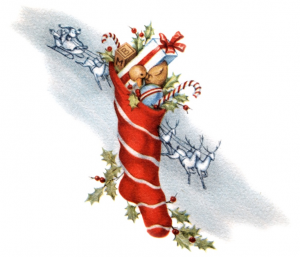
In the days before the import of the anodyne and commercial American Christmas, oranges and apples would have represented Saint Nicholas’s three bags of gold in children’s stockings (rather more capacious than shoes). These were joined by a lump of coal for luck, a bright new penny or two for wealth, some walnuts for wisdom, some sweets for pleasure; perhaps a wooden soldier for a boy, a doll for a girl. The lovingly created Christmas stockings were certainly beautiful and exciting to the eye, but they were absolutely never extravagant.
Bishop Nikolaos only somewhat resembled Santa Claus. We know because in the 1950’s the decrepit crypt of Saint Nicholas in the Basilica di San Nicola in Bari was repaired. During this work, his bones were removed at the request of the Vatican, and minutely examined, measured and catalogued by Luigi Martini, professor of anatomy at the University of Bari. In 2014, using laser scanners and highly sophisticated modelling software, the expert in forensic human identification, Professor Caroline Wilkinson of Liverpool John Moores University, recreated the face of Saint Nicholas (more recently also the face of King Richard III and that of Robert the Bruce).
[5]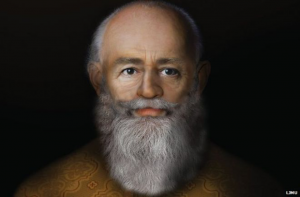
To be confronted by a speaking likeness of Bishop Nikolaos at age 73, as he appeared one thousand six hundred years ago, is mildly disturbing. The large, wide-set eyes and high domed forehead are stand-out features. The broken nose is perhaps evidence of his pugilistic past (fisty-cuffs at Nicaea) or his cruel treatment whilst a Christian victim of the Emperor Diocletian (rescued by Constantine). What is not at all obvious is that his signature beard disguises a jutting prognathous jaw, and the head has an over-thick skull, hyperostosis – both signs of acromegaly, a disease due to an over-production of growth hormone by the pituitary gland.
The last remaining small bones of Saint Nicholas’ skeleton were hoovered up by the latecomer Venetians in 1100. They are now finally at rest in the church of San Nicolo al Lido. They are fragile to the point of dust, which could indicate osteoporosis – Saint Nicholas was certainly a vegetarian.
The much travelled Saint Nicholas, deservedly the patron of sailors, was 5’5 ¾” tall, shoe size 7 ½, hat size 6 ¼. He was arthritic and would have had headaches due to his acromegaly. That is all we know so far.
But, thanks to the utmost bravery of early Roman Christians, Saint Nicholas lives with us still. He has survived his long journeys, the good Bishop Nikolaos is now safely tucked up in his nice new concrete bunker in Bari – gently liquifying into the holy gold of manna.
HAPPY CHRISTMAS
– RP
[1] https://en.wikipedia.org/wiki/Myra
[2] http://dererummundi.blogspot.in/2011/04/o-manto-purpuro.html
[3] http://jspawnit.com/
[4] http://www.vintagefangirl.com/sections/printables/page/20
[5] http://www.stnicholascenter.org/pages/real-face/


